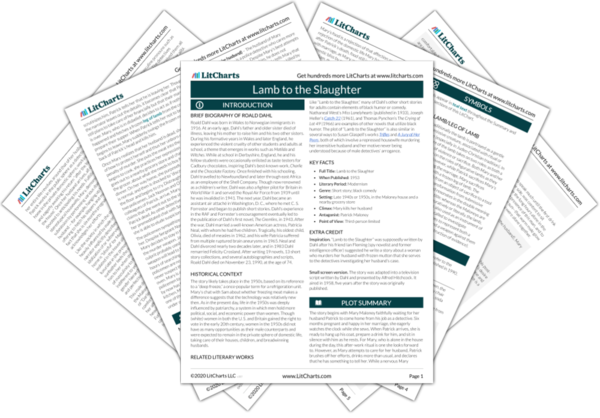Roald Dahl was born in Wales to Norwegian immigrants in 1916. At an early age, Dahl’s father and older sister died of illness, leaving his mother to raise him and his two other sisters. During his formative years in Wales and later England, he experienced the violent cruelty of other students and adults at school, a theme that emerges in works such as
Matilda and
Witches. While at school in Derbyshire, England, he and his fellow students were occasionally enlisted as taste testers for Cadbury chocolates, inspiring Dahl’s best-known work,
Charlie and the Chocolate Factory. Once finished with his schooling, Dahl travelled to Newfoundland and later through east Africa as an employee of the Shell Company. Though now renowned as a children’s writer, Dahl was also a fighter pilot for Britain in World War II and served the Royal Air Force from 1939 until he was invalided in 1941. The next year, Dahl became an assistant air attaché in Washington, D. C., where he met C. S. Forrester and began to publish short stories. Dahl’s experience in the RAF and Forrester’s encouragement eventually led to the publication of Dahl’s first novel,
The Gremlins, in 1943. After the war, Dahl married a well-known American actress, Patricia Neal, with whom he had five children. Tragically, his oldest child, Olivia, died of measles in 1962, and his wife Patricia suffered from multiple ruptured brain aneurysms in 1965. Neal and Dahl divorced nearly two decades later, and in 1983 Dahl remarried Felicity Crosland. After writing 19 novels, 13 short story collections, and several autobiographies and scripts, Roald Dahl died on November 23, 1990, at the age of 74.
